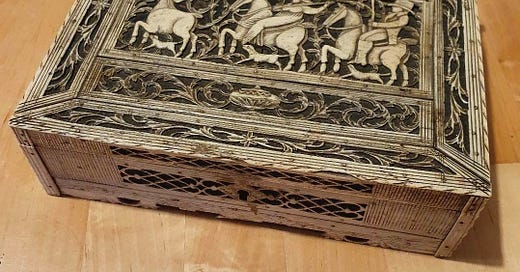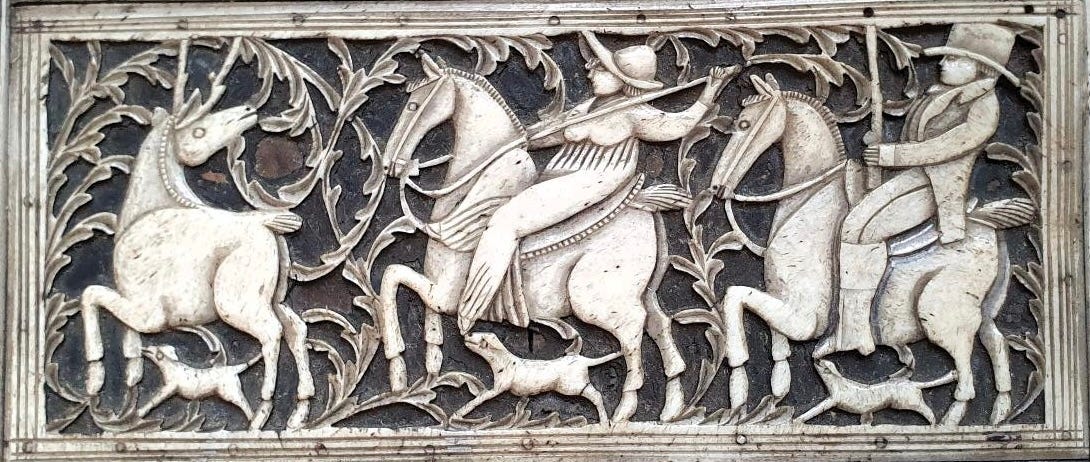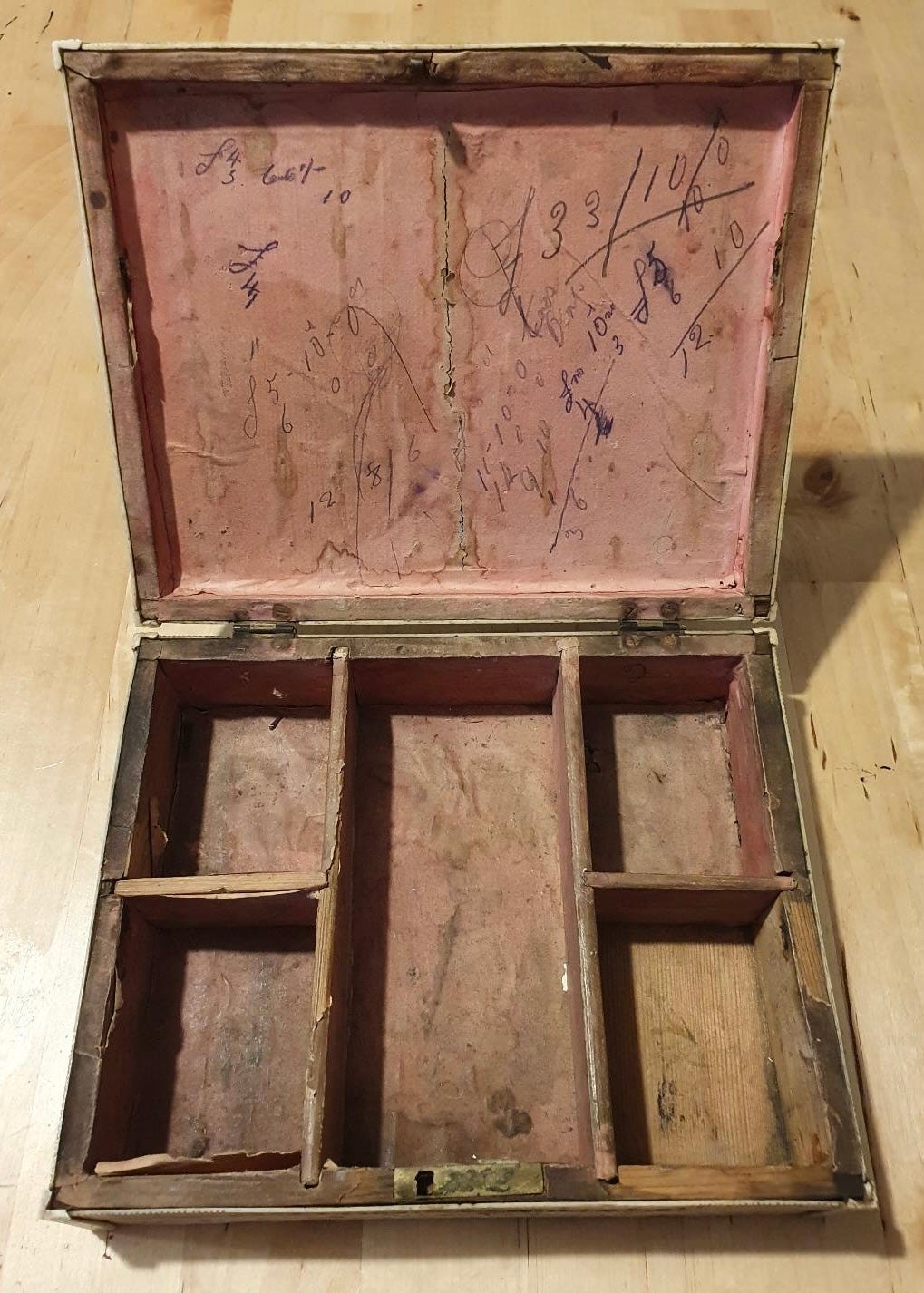I can’t get back to sleep. My head is whirling with images and questions. I get up in the dark and walk into the living room, not turning on the light but pulling the curtains to one side, just enough to enable a little moonlight to enter. I kneel on the floor and lay my hands, palms down, on the top of a box and wait – tuning-in to whatever it might tell me.
This grubby and well-worn box has been in my care several decades – unceremoniously stuffed, higgledy-piggledy, amongst papers, photos and old chocolate and tobacco tins inside a collapsing IKEA ‘archive box’. It belonged to my father. I don’t remember ever looking at it with much attention until I needed to identify an inspirational object to take to a ‘Thingness of the World’ writing workshop.
The box is 21cms by 17 cms by 6cms deep. It’s made from wood overlayed with a cream coloured material tooled to depict foliage and flowers and – in a larger central panel – a hunting scene. When I’d glanced at the box before, I’d always assumed that the two people on horseback were both men but, looking closely for the first time, I see that the figure leading the chase is a woman riding side-saddle and wielding a spear. This detail immediately made the object more appealing: maybe – I thought – the box was from the 1920s or even the Victorian era? And what was it made of: a precursor to plastic or could it be ivory?
At no point had anyone in my family suggested that the box might be of special interest or value; and no-one from earlier generations could have suggested that to my father. He seems to have used the little sections for storing coins and pound notes; and the faded red paper lining of the lid as a rough jotter to record amounts of money. He has written, in his flowing script, £33/10/0 and £5/10/0 (in old money). My interest finally piqued – and rather late one evening what Google Lens revealed was a surprise. It was also why I felt uncharacteristically compelled to get up in the night to attempt to commune with an inanimate thing.
What was I hoping the box might convey when I laid my palms on it in the darkness? No doubt I would have been seriously worried if it had conveyed anything at all. But maybe, in my half-conscious state, I was anticipating something in the manner of a hazy vision – a craftsman’s deft fingers working, accompanied by the background hum of incomprehensible peasants’ voices or even the crash of waves and the distant sound of whale song. Because what I’d discovered was that the box was much older than I’d expected and from much further afield than I’d anticipated.
With surprising ease, I’d found out that the couple featured on my box also appeared on others which had sold for unexpectedly large sums of money. One or two of these boxes were identical or just slightly different; others showed the aristocratic couple in scenarios other than hunting. All of them had been produced in Kholmogory, a centre for marine bone carving close to the port of Arkhangelsk (or Archangel) in Russia. The indigenous art of bone-turning, I learned, had been practised in the area from as early as the 12th Century but reached its peak in the 1700s and was particularly admired and patronised by both Peter the Great and Catherine the Great.
The Archangel connection maybe shouldn’t have been a surprise as that city was a major whaling port as once was Hull – where I and some strands of my family have lived for generations. It’s easy to imagine many scenarios in which goods from Archangel would end up in Hull.
It would be fascinating to visit the icy northwestern district of Russia from which this box originated, but as things stand politically this is unlikely to be possible any time soon. Even more interesting would be to know the exact set of circumstances which led to the box being in the custody of my forebears – none of whom, to my knowledge, were ever involved directly in whaling. Is the story of the box connected to the Rigall branch of my antecedents – some of whom were publicans? Or a Lundie – one of whom was a silk merchant? My dad left school early and became an aircraft fitter but I’ve sometimes thought that – provided with a different set of circumstances and opportunities – this quiet, loving and unassuming man would have been a natural academic. He was a person of theories and lateral thinking.
I wonder – what theories would he come up with now concerning his ‘cash box’ if I could ask him?
For information about June Wentland’ poetry and novels please visit her website.







Is it a unicorn that the couple are hunting, and what would that suggest if so?